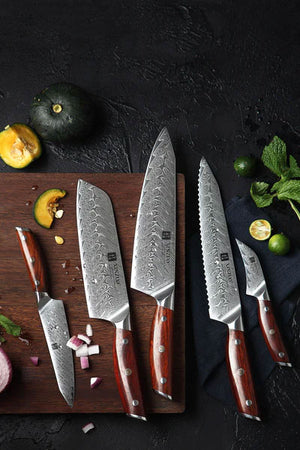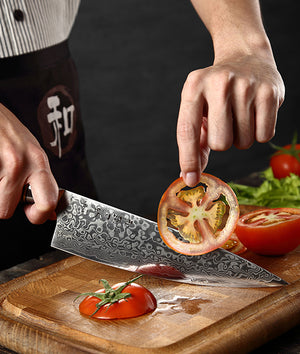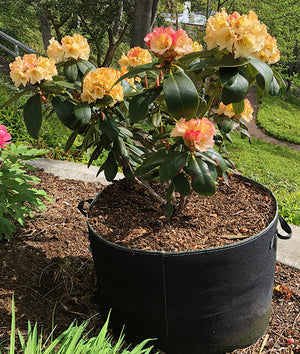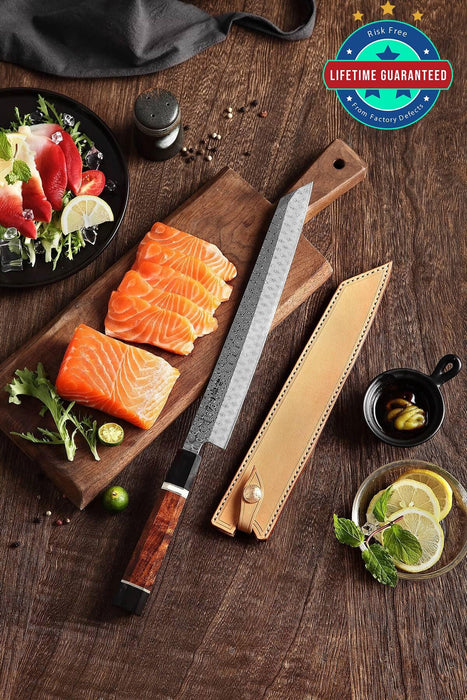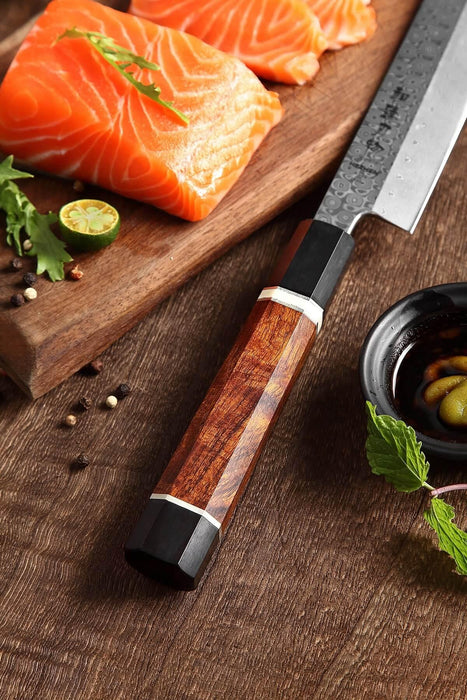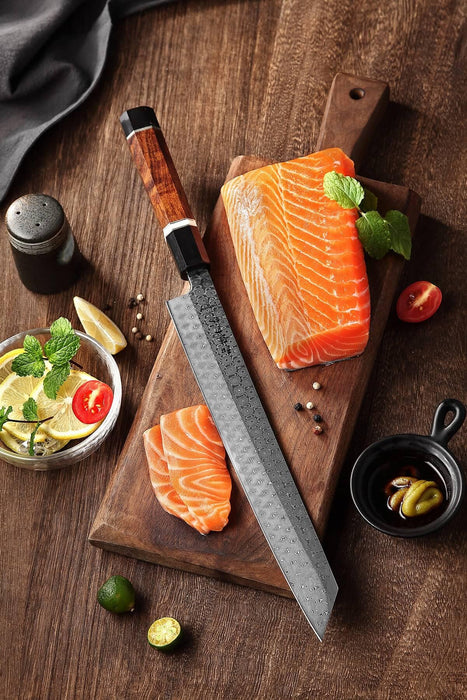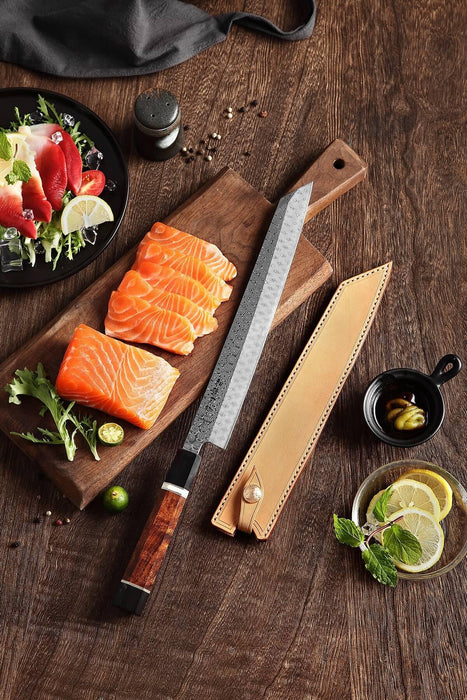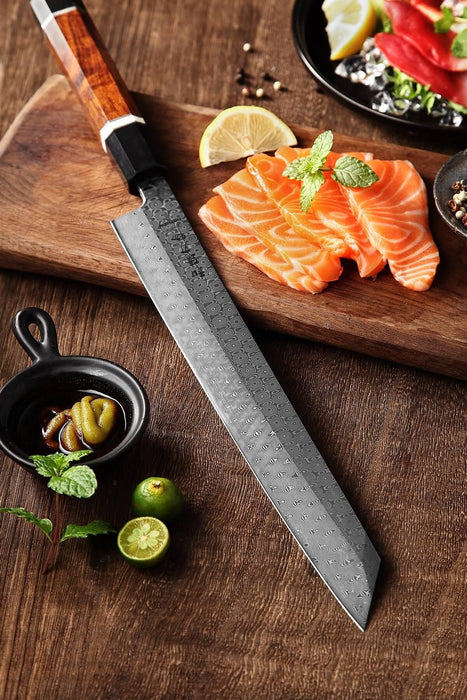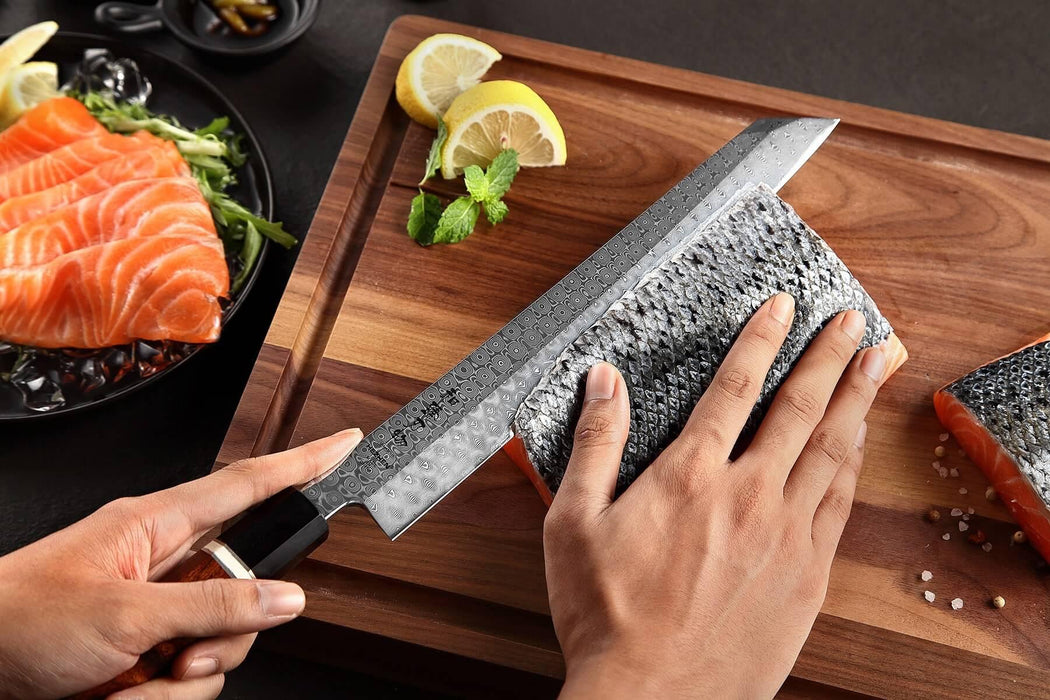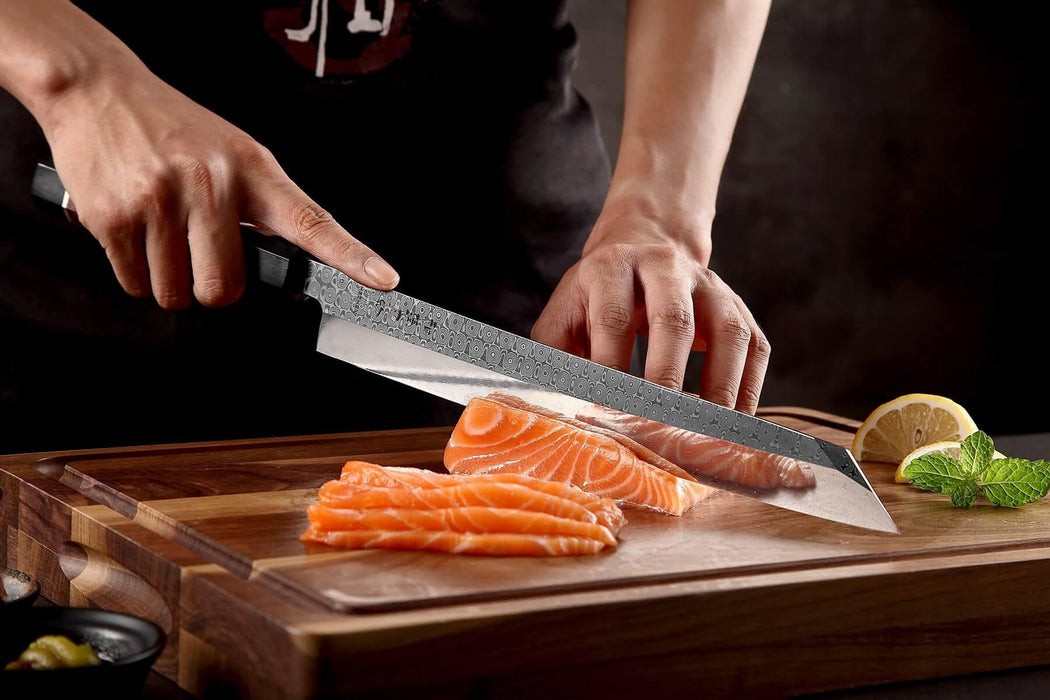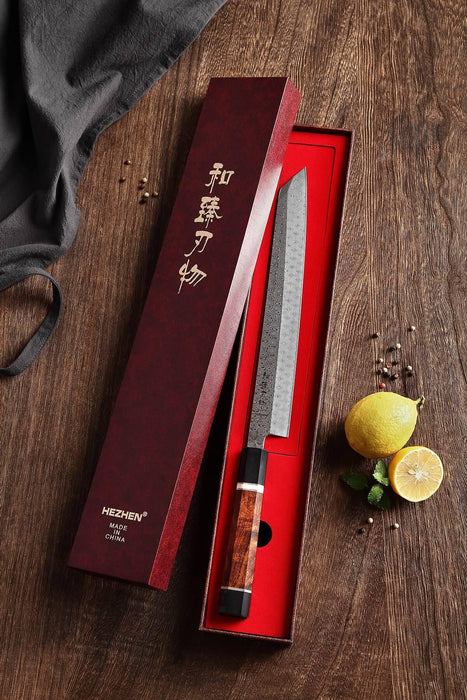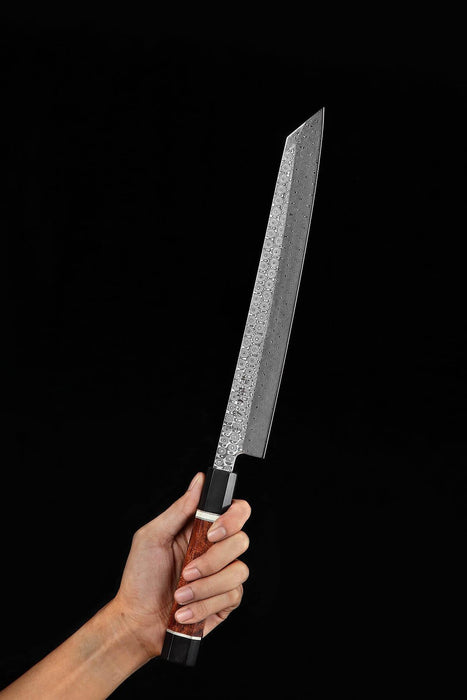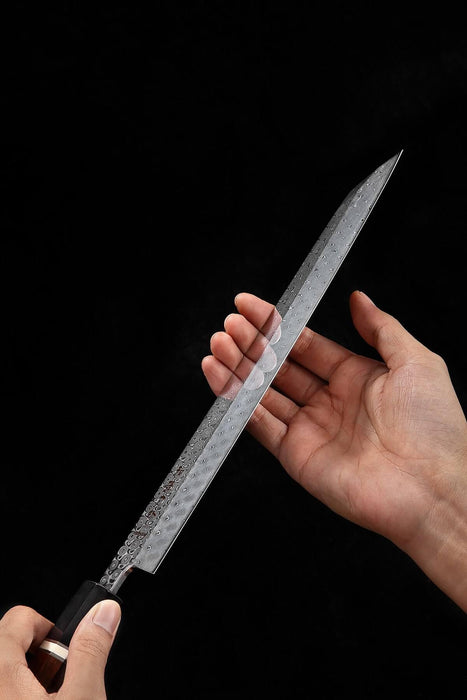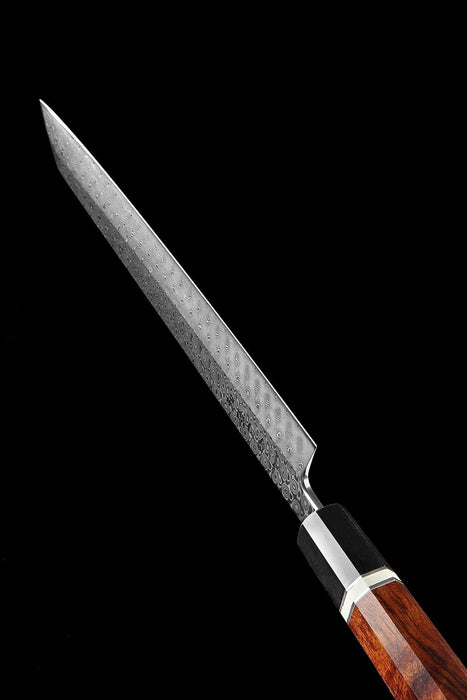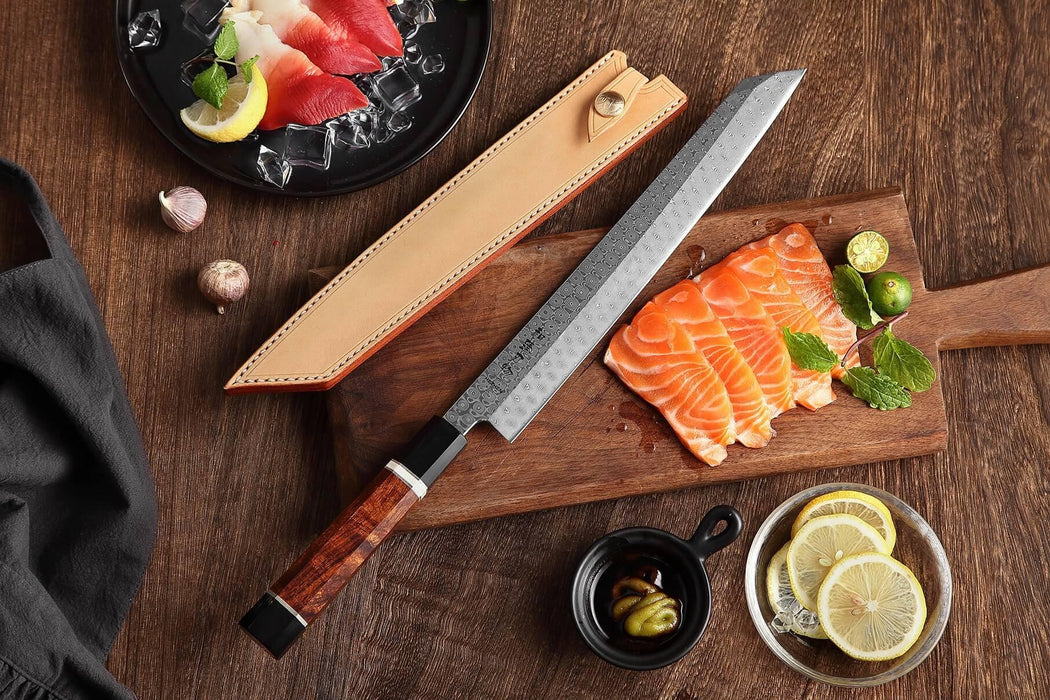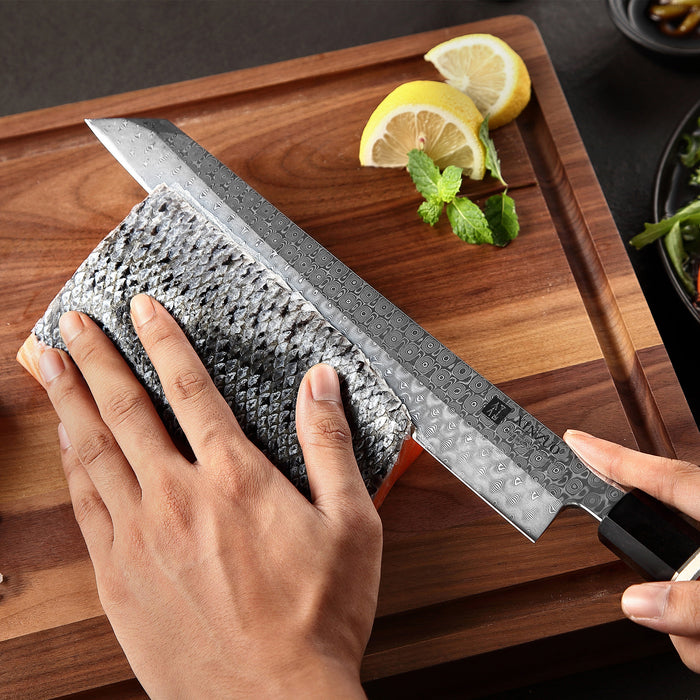
HEZHEN F3 Professional Kiritsuke knife Bunka Knife Japanese 110 layers Damascus Steel
Free return shipping on 2+ knives — open 1, try it for 60 days. Details
A kiritsuke knife is a specialized knife, boasting a long, flat blade with an angled tip - it excels in precise vegetable slicing and delicate fish cutting. The sharp edge and unique design allow for intricate cuts and chopping, providing functionality and finesse in the kitchen. While it's normally included in comprehensive knife sets, it's still multifunctional and is a stylish choice for any culinary enthusiast.
- High Carbon Steel blade with 110 individual layers.
- Corrosion resistant and tempered for edge retention
- Raindrop Damascus pattern
- Cutting edge angle of 8-12 degrees for optimal slices.
- Well balanced with ergonomic handle
- Full tang and riveted construction
- Sharpened using the Honbazuke method
- Crafted over 60 days
- Durable handle made from G10 and Desert Iron Wood
- Traditional edge design with “reverse tanto” point
- Rockwell scale hardness of 59-61 HRC
- Blade length of 10.63 inches or 270 mm
If you are dedicated to traditional sushi you need a Kiritsuke also known as a Bunka knife in your kitchen. This style of knife is designed to cut every ingredient you’ll need in a way that preserves their consistency and flavor.
This is done by a combination of blade design, edge sharpness, and steel usage. Traditional Sashimi knives like the Kiritsuke/Bunka knives are designed to make effortless cuts through fish, vegetables, and herbs.
Kiritsuke knife styles specifically use a push-pull technique emphasized by the "reverse tanto" tip. This wide tip design emphasizes the cutting motion for thin, easy cuts.
These cuts are achieved with an extremely sharp edge. This is because the edge angle is roughly 8-12 degrees, the same angle as most razors. Fine edges like this can be very hard to maintain, especially if the steel’s heat treatment is done improperly.
This is why the Xinzou F3 Bunka takes roughly 60 days to produce. During this time high carbon steel is processed and folded until there are 110 layers to the billet. After this, it goes through the 3-stage Honbazuke sharpening method.
During the sharpening process the initial edge is produced by vertically sharpening the blade. Once the initial edge has been set, it is refined by horizontal sharpening. In the last stage of the process, the blade is used on a leather strop to polish out any imperfections in the edge. This results in a very fine edge.
In order to preserve this edge, the blade is heat treated and cooled using a vacuum/deep freezer technique. This ensures consistent results and produces a steel hardness ranging from 59-61 HRC on the Rockwell scale. This means that steel is in the sweet spot for durability and edge retention.
Steels hardened above or below this range can either be too brittle or too soft. Too brittle of a knife edge will result in the edge chipping. Too soft of an edge will result in the edge rolling over. Both of these outcomes are very bad for the blade.
This is one of the reasons why high carbon steel is used. Not only can it reach the necessary hardness, it also is very resilient after the temper. On top of this, high carbon steel blades are easier to sharpen while retaining the edge for longer.
While this knife is amazing at cutting and processing sushi, it does take a lot of skill to use. This style of blade is often only reserved for the most experienced chef in the kitchen and serves as both their primary knife and a status symbol. Because of this, the blade needs to look amazing.
The Raindrop Damascus pattern, combined with the G10 and Desert Iron Wood handle, make this knife worthy of being a status symbol. The semi-concentric circles that cover the blade give a calming effect when you look at them.
The G10 and Desert Iron Wood handle add durability and elegance to the knife. The handle itself follows a traditional Japanese style that perfectly balances out the 10.6 inch blade while being comfortable to use over long periods.
A presentation case and a leather sheath are included with this Kiritsuke knife - Bunka Knife. This makes it perfect to give as a gift or add to your own kitchen. In order to preserve the knife, don’t store it in its leather sheath for long periods of time, leather attracts moisture and this can cause the blade to rust.
For the best results, hand wash and dry your knife after use, especially if the blade was exposed to acidic materials.









